Inaugural Session
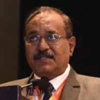
M Sivakumar
Chief Executive Officer
ICT Academy
ICT Academy started operating in Tamil Nadu in the year 2009. The objective of the ICT Academy is to bridge the gap between industry and academia. In this pursuit, there are three key stakeholders, industry, academia and government; ICT Academy pursues leveraging all three elements to ensure the industry-academia gap is bridged. Having convened 42 editions of Bridge conferences, ICT Academy continues to embark on the journey with the intent that is not just confined with India’s development, but with a vision of producing a futuristic workforce for the entire world.
It is the 10th year of ICT Academy, whose credit is owed to the entire stakeholders of ICT Academy all through its journey since the inception. In fact, the entire country has embraced ICT Academy with a big hand. ICT Academy was formed with the intent of providing value as a service. Value differs from one entity to the other invariably according to the perception of the matter in discussion. ICT Academy’s value proposition is to provide win-win solutions to all its stakeholders, which in turn adds to the growth of this great nation. We are now operating with thousands of academic institutions across the country, and hence we act as a Single Point of Contact for the entire academic community especially on developing the skills of faculty members and students.
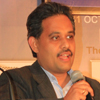
Lakshmi Narayanan
Emeritus Vice Chairman, Cognizant & Chairman
ICT Academy
It’s a great privilege to be here for this industry-institute interaction event. First I must thank Dr Mohan Reddy who has been actively involved in Institution building; he is one of the important people who represented the industry in building ICT Academy for the past several years. I must also acknowledge the role Industry associations have made in formulating ICT Academy. The primary intent of the ICT Academy is to take higher education to institutions in Tier 2 and Tier 3 cities. The reason for which this was set as an objective was that there is a tremendous demand for ICT capabilities.
The way, ICT Academy is doing it is by developing the faculty members in all the colleges. We do have challenges, good challenges so to say; Technology in the last 10 years has grown tremendously. The opportunities we have for young people today is phenomenal. Data Science, Cloud Computing, etc., were terms unheard of even five years back. Unless institutions like ICT Academy scale up and provide good qualified, educated students, we will miss a huge opportunity that lies ahead of us as a country and as an Industry. The main challenges are to remain ahead of the current technologies, sometimes we think that a particular technology is 4 or 5 years away, but before we even realize, it will start demanding resources. Few things that would help the academy is, liberating education, where academic institutions are empowered to offer courses, training, with or outside the curriculum, etc. I am requesting you all to liberate education and make it accessible to everyone across the nation and also the faculty members to devote a little bit of their time in equipping through various programs happening in your own fields.
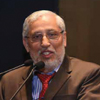
Prof. Anil D Sahasrabudhe
Chairman
AICTE
ICT Academy, in addition to providing skill sets, also plays the role of integrating our different States into one union. We are happy that we are engaging ICT Academy in our mission for the northernmost states, Jammu and Kashmir. About 3 years ago, AICTE drew a 10 point agenda to increase the number of faculty members to match the required quantity, along with realizing the quality transformation in our institutions. One of the key aspects of the agenda was to upgrade the curriculum in all domains for all the technical universities and institutions.
The telling challenge in this lied in practically applying the curriculum, because the teachers, who had graduated 10 to 20 years before had to be trained to learn the same. To accomplish this mission we started instituting AICTE Training and Learning (ATAL) Academies and today we have 15 ATAL academies across India. ICT Academy is a key player in our mission to empower the teachers to gain a passion for teaching and to be able to revise the curriculum regularly, in addition, to be skilled to interact with students using blended learning and be augmented with administrative skills and leadership skills. Whatever ICT Academy is doing, we are on the same page, in making India a destination for start-ups and innovation, and creating a new India which would shine in the global arena.
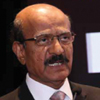
Padma Shri BVR Mohan Reddy
Founder and Executive Chairman
Cyient
There is a misconception that a watertight compartment exists between academics and skills, wherein academics is deemed as the source of knowledge, while skills help you in its application. This misconception has deteriorated the scope of Engineering Education. But, as widely circulated, it is not true that Technical Education is going to sink further from where we are today. Thanks to the corrective measures that are being instituted, we see a fairly large amount of progress that is happening. The following are my 3 primary recommendations to mitigate attrition, eliminate the drawbacks, and alleviate the stature of education, Engineering Education in particular:
- Revive Technical Education through Increased Industry Alignment, Student-centric Learning, Multi/Interdisciplinary Programs, Deepened Industry-Institute Connect, Aligning future education trends, and Faculty motivation & Pedagogy.
- Focusing on high-quality accredited Digital Education in all academic streams like Healthcare, Agriculture, Education, BFSI, Manufacturing, Retail, Aerospace & Defense, and Mobility.
- Make Professional Skills a part of Education to increase practicality & enhance employability, and to reduce the skill gap between corporate expectations and employee capabilities.
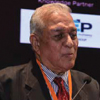
Prof. KK Aggarwal
Chairman
National Board of Accreditation
ICT Academy is doing a remarkable job in bringing the institution and the academia together. ICT as technology has transformed society on a large scale and has brought in the assurance that good knowledge can certainly make good money. It has made us believe that skills are at times more important than hardcore knowledge itself. ICT technologies have killed the boundary line between knowledge and technology to mandate that both have to work together to make any meaningful beginning. For example, learning Python is a skill, while a deep learning algorithm is a hardcore knowledge, and we cannot use Artificial Intelligence unless we know both of them.
Technology has grown beyond the 8 new technologies, and now we are improvising the combination of skills like Embodied Artificial Intelligence, Intelligent Automation, Automating Trust of Organizations, and Conversational Interfaces. So, we should replace the "or-model" with the "and-model" and synergize skills with knowledge to ensure the positive progression towards greater results. ICT Academy is doing a great service by providing the platforms like ‘Bridge’ and its Training Programs that enable knowledge and skills to come together for the realization of such a combination of technologies.
Industry Keynote Session
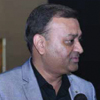
Amit Nevatia
Educate Program Lead
Amazon Internet Services Pvt Ltd. AWS
The word that Amazon uses in the place of ICT Academy's Augmenting Skills and Accelerating Growth is Innovate, Inspire, and Impact. Any drive to implement growth and progress will not be successful unless we are able to connect with the humans involved in the process. The humans would be more encouraged to implement a strategy if we are able to innovate with them, inspire them, and impact a large group. In today’s world, we have diverse supply chain models like the online model, work from home model, etc.
The crux of these matters imply that that the new needs are all about personalization, custom analytics, and the other things that are going to scale rapidly from the education and skilling perspective. The PWC report says that the 8 essential technologies of the 4th Industrial revolution are Artificial Intelligence, Augmented Reality, Blockchain, Drones, Internet of Things, Robotics, Virtual Reality, and 3D printing. AWS and other institutions like the ICT Academy are trying to build a skilling ecosystem or a backbone for the country to adopt the newest technologies and succeed in training the students to be job-ready. Our new product, AWS Campus, involves a 3-year journey with our member institutions to revolutionize the education system and help the students be ready to take on the Industrial Revolution 4.0.

Murugan Vasudevan
Head - South Asia, Social Innovation Group
Cisco Systems
A reputed agency in the US conducted a survey to find the institution that people trust the most among 6 major options. Interestingly, the results of the survey revealed that Technology Companies, in about 20/25 years, have earned the same level of implicit trust that the Churches and religious organizations have earned over thousands of years.
A general notion is that people seek the leverage of religion only when they have exhausted all other options and have nowhere else to go. Similarly, people have resorted to technology even to manoeuvre the common chores of everyday life in all walks. This is because almost all human activities are conjured and are programmed to interact/transact through one common channel, Network, the convergence platform. This technology platform is hence required for the application of even the simplest of social change. So, the future workforce should be exposed to multiple systems to become a T-shaped professional with interdisciplinary breadth. Latching on to Cisco’s Tag line, ‘The bridge to possible is you’, I would like to conclude that the academicians present here are architects who could muster the kind of bridge, the future workforce, that would scale the gap between aspiration and action.

Tanmoy Chakrabarty
Group Government Affairs Of?cer
Tata Sons Private Limited
In the next few years, the average age group of 70% of our population will be between 24 and 30 years, which is the threshold of employability. So, it is the responsibility of the faculty and the educational institutions to inculcate the needs of tomorrow through the curriculum of today and enable the young people to become employable globally and not just in India. Technology plays a tremendous role in digitally levelling the differing standards of education across the nation. For example, technology can freeze and widen the scope of an excellent lecture by an exceptionally skilled faculty by extending its reach beyond the confines of the classroom/chronology and enhance its availability to the widest possible range of audience and posterity. If this technological levelling of educational standards is done with due diligence, a lot of students could be churned to gain global employability potential.
The next challenge that we confront is to focus the curriculum of today on the country of tomorrow. Tech-skilled graduates are required for bringing about social transformations like solving water-related problems, urban issues, messy-traffic, and diseases. So, the dynamism of today’s curriculum has to be augmented to meet the dynamism of the existing/emerging technologies and to aptly align the skill sets of the students with the needs of the country.

Manu Srivastava
Director, Government Business
Oracle
ICT Academy is doing a great job in enlightening the stakeholders of the Industry and Academia by extending the facilities of Oracle Academy. This helps the businesses across the world to keep pace with the ever-changing digital scenario in almost all the verticals. Right through the course of Oracle’s journey, the ever-present factor that it has dealt with amongst all its benefactors/beneficiaries is Data. This aspect, data, has phenomenally grown in stature from being a mere piece of information to being an Asset that requires high-level multi-faceted security features to curtail unauthorized/unwelcome access. Oracle has adopted AI and ML into its data management portfolio to address the repetitive tasks involved in the process and to perform proactively as well as curtail any breach. We call this Oracle Autonomous Database, the first of its kind in the world.
To handle this innovative move forward we need people with skills to understand and know how to operate the next-generation technology. Oracle Academy caters to this context by helping the teachers in the state-run and private institutions to be equipped with the knowledge of the technological nuances. These teachers, in turn, can inculcate the required skills to the aspiring students. Please reach out to ICT Academy for further information.
Session on Government Schemes/Funding Opportunities for higher Education Institutions

Dr. Rajeev Sharma
Scientist-E, Department of Science and Technology
Government of India
I have been with DST for the past 30 years. I have been in many divisions but most of the time I have been in the technology development program. Currently, I am in the ICPS division of DST. DST was established in 1971, the focus of this department is to provide funding/grant in need in project mode. Another mandate of DST is the formulation of policy and guidelines for Science and Technology. In 2016 the National Mission on Interdisciplinary Cyber-Physical Systems was initiated by DST.
The Honourable Prime Minister announced that there should be a National Mission on Cyber-Physical System in the 104th National Science Congress in 2017. The budget for the program was announced in 2018 by the Honourable Finance Minister. The main agenda of DST through the mission will be implemented through setting up 25 hubs out of which 15 technology innovation hub, 6 application innovation hub and 4 TTRP. We have already launched the call for 6 hubs. We are planning to connect academia to the hubs and set up some innovation centres as well. The outcome of the mission will be to come up with 500 technologies, 800 start-ups, 40000 job creation (short term) and 200000 jobs in the long term.
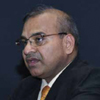
Prof. Rajive Kumar
Member Secretary
All India Council for Technical Education
Though AICTE is a regulating body, it has thoroughly changed its role from being a regulator to a facilitator. Now we are facilitating institutes, students, and we are connecting the institutes with industry. Further, AICTE has been studying the fact that even top scorers in graduation are counted unemployable by the industry. Such claims indicate that there is some flaw in the assessment system. Hence, AICTE has constituted a committee that examined the question papers of the best institutions in the country and found that most of them had questions that were only based on the rote learning, which tested only the memory power of the students. All these learning have made us draw the Examination Reform Policy, which is based on Bloom’s Taxonomy. However, AICTE will focus on framing question papers that wouldn’t comprise questions that only test the memory.
Power Panel Discussion on “Changing Industry Trends”

Amit Aggarwal
Chief Executive Of?cer, IT-ITES Sector Skill Council
NASSCOM
Before we get into the panel discussion, let me take you through some research the Industry has been doing in terms of the recent trends. Every two years, the World Skills Competition in different countries and this time it happened in Russia. This time 4 students from India won medals. In a recent survey that happened, lack of digital skills has emerged as a key concern for the CEOs. This is the reason why NASSCOM introduced the Future Skills initiative the industry is driving. The vision is to make India the global hub for digital talent. Our mission is to skill 4 million people by 2025 in the new emerging technologies.
In universities, professional skills and soft skills are becoming equally important as technical skills for a student to be employable. The panel is going to discuss the ecosystem that is being created by the industry and how the Universities can be benefited from them. Let’s move to the panel discussion.
The question to the panel is, with the different universities you have worked with across the country, what are few great examples of universities doing great work that can be used as a role model for other universities.
Amanda Bauman
Senior Manager, Student Programs
Salesforce
At Salesforce, we have an amazing community, the Trailblazer community which has about 4 million people in the community. About two years ago we realized, we don’t have any presence in Universities. So, what we did was we created an initiative for students to launch user-groups on campus for Salesforce and that has been tremendously successful. Right now we have around 280 students group across the globe and 150 of them from India. The very first one was from MVGR College of Engineering, Vizag. The faculty member there heard about Salesforce from a friend and he explored the platform and then handed over that to students to run the group at the school and two years later on they are all doing well in our ecosystem. Another example is Meerut Institute of Engineering and Technology, where the students took the initiative and started learning and many of them have jobs in our ecosystem.
Prashant Rao
Head - Application Engineering
MathWorks
Project-based learning is the key. When we started our operations in India 10 year ago, we had to make a shift in all the materials we were using. Because outside of India most the people we were working/engaging within academia were mainly focused on research. So, all our materials were geared towards that. But in India, it’s focused on teaching and we had to rethink the way we approach the education market in India. There are a lot of case studies that are taking this up in a great way. In every institute where the academician and educator have understood that students need to learn from a different medium.
In KLE Tech, we implemented project-based learning where they realized they need to move from classroom teaching to enable students to create projects to see the results and that is where the learning comes from. Another case study is a tech services company focusing on the automotive industry, took the initiative to formulate a course for institutes to follow and if the students had taken up and went through the course they will be absorbed into the company. So we enable them to teach model-based design which was a part of the course. These are a few examples where institutes and industries are working in an inspiring fashion.
Sairam Veeraswamy
Senior Director - Innovation Programs
VMware
IISc has been working with Robert Bosch Centre for Cyber-Physical Systems for a while and they have been driving Smart City Data Portability challenge. Today it’s difficult for data to be ported from one smart city to the other. So, they are working closely with the industry and took it to the ministry of HRD to get it through and this is a clear demonstration of how industry and academia can work together. In this case, academia took the lead and that was a grand success. Similarly, another institute in Coimbatore conducted a large scale event where it also includes the industry and was totally organized by the students. We are in the systems spaces, most of the fundamental system problems are not being addressed by the current curriculum. One of the academic institutions came up with a proposal for setting up a centre for study and system research, which was well received by the Industry. VMware also runs an initiative called Women in Code, which has got a phenomenal response.
Deepankar Bhattacharyya
Head-India Education Programs
Autodesk
Let me start with the higher end of the pyramid. I will start with the Institutions. So Indian Institute of Science in Bangalore was rolling out a new program on Smart Manufacturing. The program was designed in such a way that the program synergizes with the industry. I recently happened to attend their annual tech fest, Gravitas. It is a huge event and most of their events are project-based learning, which again collaborates with the industry. And in Dayananda Sagar University in Bangalore runs a talent search competition across the country primarily focusing on Design using some of Autodesk’s tools. This is one good way to generate upward mobility, hence encouraging the students in choosing a career in Design Engineering. In the industry, the skill gap is very high right now, so we need to come up with such programs to encourage the students in the right path.
Having worked with a few large universities, I agree with one point that, it depends on who drives the university/institution to make sure the university/institution is on a path to progress.
Ruchi Sharma
Delivery Manager
Atos Syntel
We have collaborated with the University of Cambridge where we collaborate with institutes and industries and ensuring people are skilled in the technology needed and helping them out. We have seen the campus hires joining us, earlier students didn’t use to have clarity on what their role would be. But, today students joining are already aware of what is going on and have certification/experience as well. So, roughly out of 10 students 7 or 8 might already have any sort of relevant certification or experience.